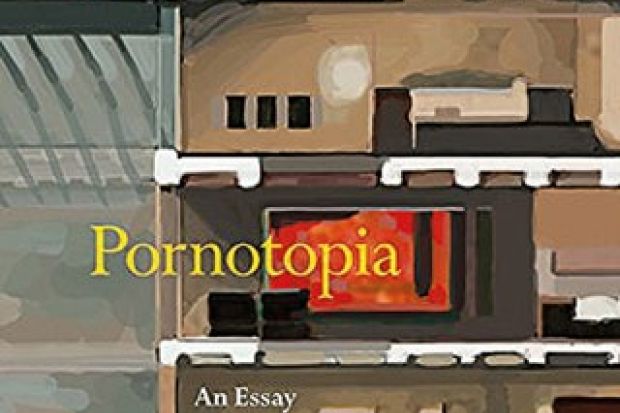There are a few things you should know about this book. First, it is a republication of a doctoral thesis that appeared in book form in Spanish in 2010. Second, its author is responsible for the remarkable, genre-defying Testo Junkie: Sex, Drugs, and Biopolitics in the Pharmacopornographic Era, an account of her transformational experiences under the influence of high doses of testosterone. And third, I really wish I’d read it when it first came out. But better late than never.
The literature around pornography in general, and Playboy in particular, has become very rich in recent years, especially from a feminist perspective: Elizabeth Fraterrigo’s Playboy and the Making of the Good Life in Modern America (2011) is an outstanding example of what has become, in a way, a genre – an open-minded but still principled take on something that is too complex and too popular to be simply dismissed. What Fraterrigo did was to show how Playboy had, confusingly for its detractors, no shortage of liberal character. It’s obscured by the loathsome Bunnies, and Hugh Hefner’s general weirdness, but Playboy consistently supported a right to pleasure regardless of gender and sexual orientation that prefigures modern-day identity politics.
This book inhabits the same territory, but with the focus on Playboy’s architecture. The architecture is both real and imagined. The real stuff, the mansions in Chicago and Los Angeles, and the clubs worldwide, are familiar enough, if only in hearsay. The imaginary stuff is less well known and includes plans for bachelor pads of various kinds, incorporating designs for erotically assisting furniture. In between these things, Playboy assiduously kept abreast of architectural trends, seeing in the work of John Lautner, Charles Moore and others a vehicle for articulating the magazine’s erotic programme. Pick up any copy from the 1950s or 1960s alert to this, and it is startling how much architecture there is. It really is more Homes and Gardens than Hustler.
Beatriz Preciado has really done her homework. She goes into far more detail than anyone else on Playboy’s spatiality, exploring the mansions as well as the unbuilt townhouse with (I am sure) unprecedented thoroughness. She constantly turns up revealing details: a fireman’s pole that deposited female visitors abruptly into the downstairs level of the original mansion; Hefner’s predilection for horizontality, to the point where he and colleagues would “crawl” on all fours around office papers spread on the carpet; the presence of surveillance technology everywhere imaginable in the mansions; and, in a brilliant piece of description, the austere fourth floor of the mansion where the Bunnies slept, ate and were instructed in their trade. This last, with its description of nakedly manipulative space, is worth the price of the book alone.
Pornotopia works best in these things where details make the argument. Preciado’s feeling for architectural space is acute; she understands implicitly what matters, and how, particularly, power operates in space. She is admirably open-minded too, something she shares with Fraterrigo. To Times Higher Education readers, Playboy will now seem irredeemably sexist, where it is not simply absurd. Preciado understands, however, the threat that Playboy undoubtedly posed to 1950s American sexual ethics. Its role in turning a somewhat puritanical nation into the sex-obsessed one we now know is key. It is one of the great American stories, and Pornotopia tells it extremely well. It rattles along, for the most part, for which high praise goes to the author, who is also the book’s translator.
It bears a few tics from (I imagine) the original thesis. There are some weary-sounding theoretical digressions that rarely add anything. I understand that Jacques Derrida was once a mentor of Preciado’s, which maybe explains them. They seem decorative and cursory now, however, designed to impress some long-departed thesis examiner. There’s no real need as Preciado’s text and thinking is otherwise so lucid – but it’s a minor point.
The book concludes with a fascinating coda on the difficulties Preciado experienced with Playboy’s organisation, something she shares with many, including this reviewer. Playboy, in short, wouldn’t cooperate, as usual seeing anything that isn’t hagiography as a threat. Preciado turns this problem into a strength. Revelatory of ideology, it makes it more, not less, worth studying. Compellingly written and funny as well as troubling, Pornotopia is certainly one of the architectural highlights of the year.
Pornotopia: An Essay on Playboy’s Architecture and Biopolitics
By Beatriz Preciado
Zone Books/MIT Press, 288pp, £20.95
ISBN 9781935408482
Published 14 November 2014
Register to continue
Why register?
- Registration is free and only takes a moment
- Once registered, you can read 3 articles a month
- Sign up for our newsletter
Subscribe
Or subscribe for unlimited access to:
- Unlimited access to news, views, insights & reviews
- Digital editions
- Digital access to THE’s university and college rankings analysis
Already registered or a current subscriber? Login





